Do Australian Shepherds Shed?
Yes, Australian Shepherds shed a lot.
The Australian Shepherd breed is amongst the heaviest shedders in the dog population, mainly because they have a double-layer coat (A top coat and an under coat).
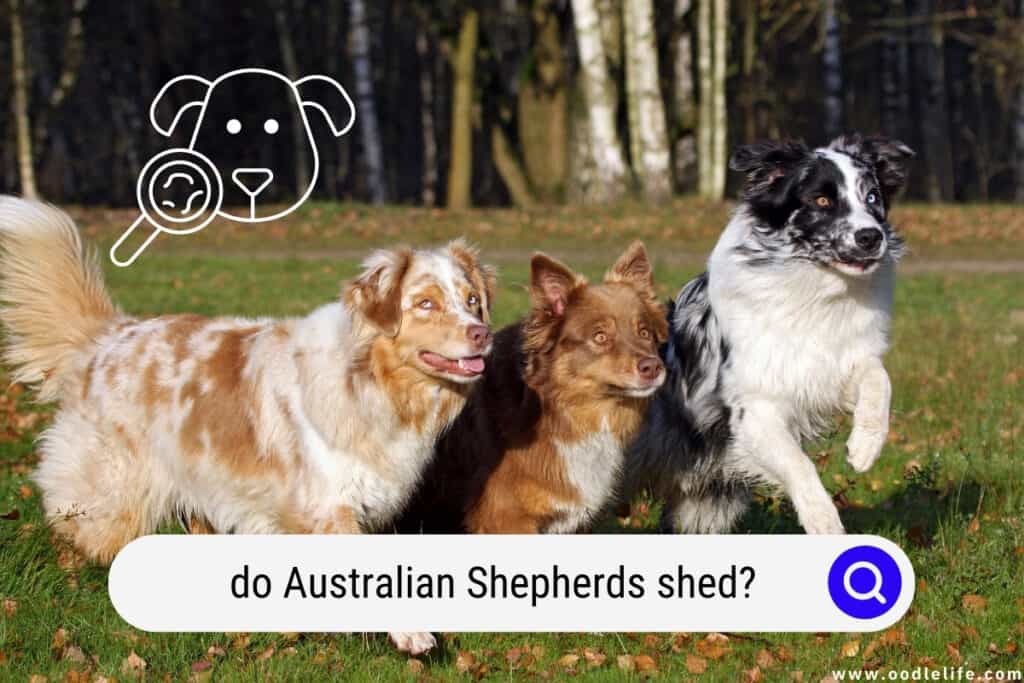
If you’re thinking of getting an Australian Shepherd, be prepared to invest a lot of time and labor in grooming your pet as well as cleaning and vacuuming your house.
That said, Australian Shepherds are one of the most intelligent dog breeds and have limitless energy, making them a fun pet to have. They are also popular as assistance and guide dogs.
If you do have an Australian Shepherd, or are thinking of getting one, we have a few tips for you to keep on top of their grooming and shedding.
Shedding Frequency
As we already told you, the Australian Shepherd has two coats. Double layered dogs will shed considerably more than single layered dogs such as Terriers or Greyhounds.
The undercoat thickens up during winter to keep the dog warm, and thins out during summer to cool it down. Spring and fall are therefore the timelines for increased shedding as your pet prepares for colder/hotter temperatures.
The shifting from winter coat to summer coat is commonly known as fur blowing or coat blowing. Shedding happens from both layers during fur blowing, allowing a fresh coat to develop for the coming summer. This excessive shedding is sometimes referred to as a fur explosion.
During these seasons, not only can your vacuum cleaner run into overtime, but you may also have to invest in high-quality de-shedding tools like the Furminator. Older dogs also tend to shed more as they age.
The weather will also play a role in the amount of shedding. Your Australian Shepherd requires a thick coat for winter and if you live in a colder climate, with relatively chilly summers, then your dog will shed less.
An easy way to remember this is that the greater the difference in temperature between summer and winter, the more shedding.

Should I Be Worried About The Shedding?
Shedding for an Aussie (That’s what they’re generally referred to as!) is normal.
However, if you notice your Australian Shepherd shedding more than usual, it could be due to some underlying medical condition. Some of the conditions to watch out for include:
- Anxiety or stress- Aussies are emotional animals and changes such as a new pet or a newborn can give them anxiety, leading to shedding. This is usually a temporary thing
- Changes in routine can also lead to anxiety, as Aussies are creatures of habit.
- If your dog has recently developed any skin allergy, this could also contribute to shedding.
- Food allergies can also lead to shedding so monitor any diet changes closely.
- A medical condition which may manifest as loss in appetite, shedding or moodiness should be addressed by a vet as soon as possible

Does Shedding Really Matter?
The Asthma & Allergy Foundation of America states that approximately 20 percent of the population is allergic to dogs. In reality, it’s not exactly dogs they are allergic to, but dander. Think of dander as dog dandruff, released as dogs shed fur.
Dander, as an allergy causing irritant, can be very unpleasant, especially in a closed environment such as a room. And if you have rugs and carpet in that room, expect dander to accumulate there as well, aggravating your allergies.
If you have dander allergies, you’re better off without a dog, although many will suggest getting a hypoallergenic dog such as Terriers, Poodles or a Shih Tzu. These dogs have minimal to no shedding. But many others believe that hypoallergenic dogs are a myth.
As we already told you, the actual allergy causing agent is dander not fur– and because all dogs will have dander, chances are your allergies will remain active in their presence.
If you’re not allergic to dogs and don’t mind a little bit of extra time and work for your furry friend, read on!

Ways To Deal With Australian Shepherd Shedding
Aussie’s can make loyal and happy pets and are well-worth the extra effort spent in managing their shedding. And it may help you to remember that in the greater scheme of comparisons in the canine world, Aussie’s are actually ‘average shedders!’
Truly heavy shedders include breeds like the Alaskan Husky, Siberian Husky, German Shepherds and Golden Retrievers. So here’s how to keep on top of your pet’s grooming needs:
Regular Brushing
The Australian Shepherd has a self-cleaning coat, but you will have to aid them in removing knots and dirt. Also, to keep the pup’s skin and hair soft and silky, you’ll need a brush with sharp teeth as well as an undercoat rake.
When brushing your pup, begin by stroking towards the direction where the hair grows, then brush more vigorously (gently) across any resistant areas. To ensure that no dust or knots are left behind, use the undercoat rake to brush through the hair back down. As the Australian Shepherd Club of America recommends, use the undercoat brush softly instead of scraping it from the body.
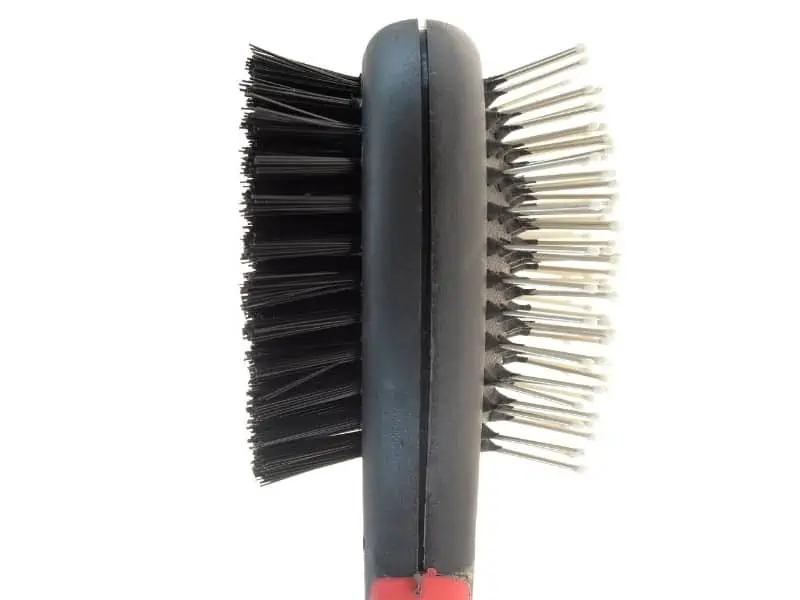
Use The Correct Tools
Brushing again and again is going to make little headway on your pet’s shedding if you’re not using the right tools to begin with. Professional grooming tools may cost you a little but are well worth the investment as you will be using them quite often,

Don’t Bathe Them Too Often
While brushing your Australian Shepherd regularly is a big yes, bathing them often is a big no.
Bathing often may disturb your dog’s natural oils, which are necessary for maintaining the health of their coats. In addition, bathing them too frequently might also deplete these oils. This can eventually cause skin irritation and other issues.
While Australian Shepherds are not prone to skin inflammation or other skin complaints, overbathing could potentially lead to skin issues.
Skin conditions frequently result in increased fur loss around the location of discomfort. As a result, you’ll not only have to cope with your dog’s pain, but you’ll also have more hair drifting throughout the home!

Feed Them a High-Quality Diet
You should also prepare high-quality food for your dog. Low-quality dog diets might cause your dog to shed more since their fur will not stay healthy.
Omega fatty acids are important for preserving your dog’s hair shafts, reducing damage, and shedding. You may either feed your dog a meal that already contains omega fatty acids or supplement it individually. Because you won’t have to bother about adding anything to your dog’s meal, the former is frequently simpler.
Other vitamins may be beneficial to your dog’s hair and skin. For example, high-quality dog meals with meat will have more essential oils than others.

Trim If you Must, DO NOT Shave
Despite the fact that most grooming experts advise against shaving or trimming a shedding dog, you may control an unruly coat with a set of thinning shears. For the most realistic appearance, ASCA advises the use of shears having 40 to 44 teeth.
But unless advised for medical reasons, stay away from the thinning shears. Experts actually argue that thinning does not minimize shedding, but just makes the dog shed finner hair/fur.
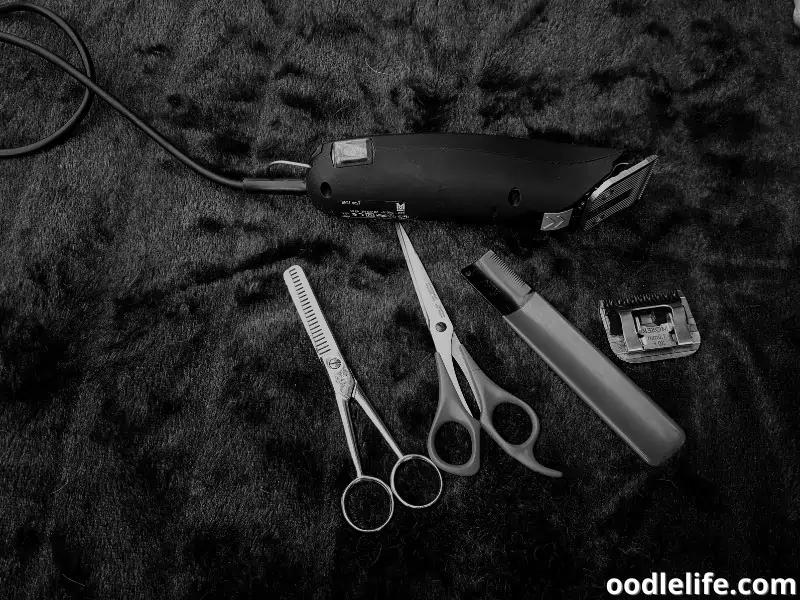
Give Them Supplements
Supplements are also good for the health of your pet’s coat. While vitamins may not solve your dog’s shedding problems right away, Omega 3 and Omega 6 fatty acids are actually great for healthy skin and fur.
Therefore, keeping a suitable balance of Omega fatty acids in your dog’s food can help keep their hair and skin in good condition. The great news is that most vitamins to support healthy coats are now offered in liquid or chewable form, which may be added to your dog’s diet.
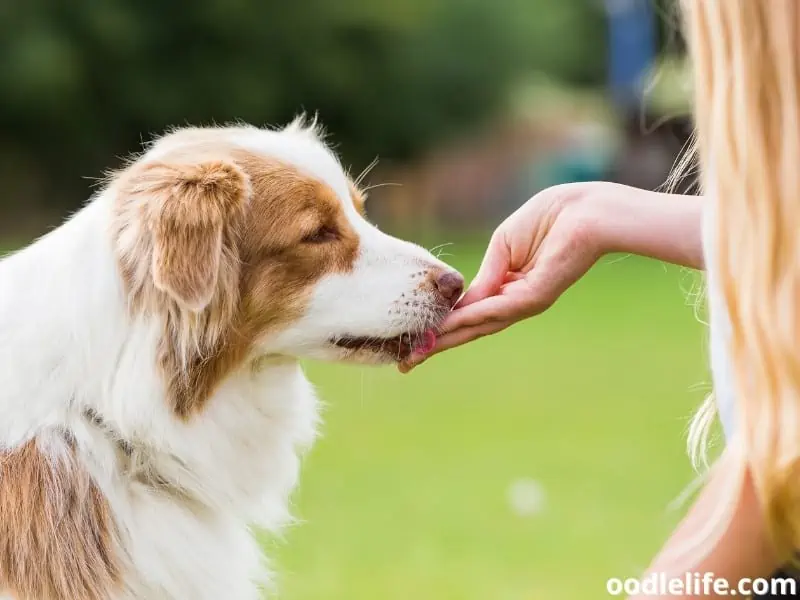
Keep Your Aussie Moving (Exercise)
Exercise is essential to an Australian Shepherd’s existence, with or without shedding. And your Aussie should get at least 1-2 hours of intense daily activity.
You may assist loose dead hair fall out more easily by keeping him outside as much as possible, running about, jogging, and leaping. You can also carry a brush with you on your walks. Every little bit counts!
The last advantage will be being inwardly healthy and fit. Improved internal health will result in a healthier coat and skin. All of this contributes to reduced shedding.
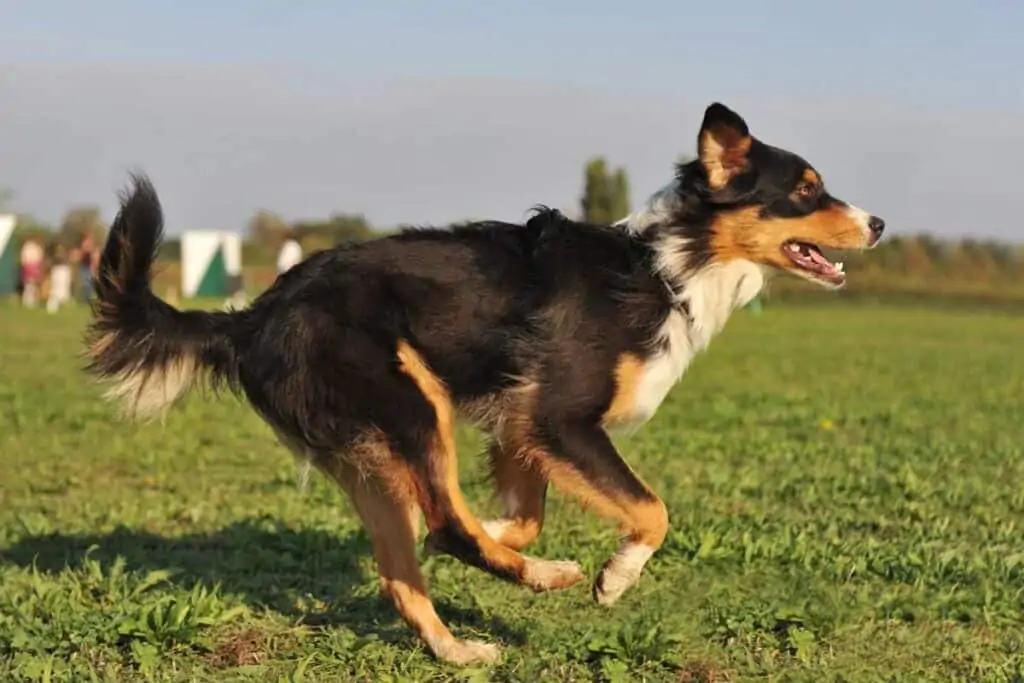
Keep Your Australian Shepherd Outside
This is not something you can perform in subzero temperatures since Australian Shepherds are not suited to blizzard conditions. However, if you reside in temperate or warmer climates, this might be an excellent strategy to reduce allergies in the home.

Monitor your Pet’s Health
As we already discussed, health issues can sometimes be the reason for excessive shedding in your pet. You need to therefore regularly check your dog for any skin infections, or breakouts.
Food allergies are quite common in dogs, making them itchy around their paws and tail. Excessive scratching in these areas will also lead to more shedding of fur.
No Rugs or Carpets
As previously said, dander (together with fur) tends to accumulate on rugs and carpets. And if you don’t do something about it, you may develop severe allergies. The best option is to get rid of all carpets and rugs.
There are alternative options if you intend to keep your Australian Shepherd home. A house with floors made of other materials (wooden, granite, etc.) would be ideal. You could also keep your dog in a section of the house which has no carpet.
Keep in mind that if this non-carpeted space is tiny, you’ll need to take them out to exercise regularly.
Coat-Care For your Australian Shepherd
Aussies have a lot of hair which requires frequent grooming and upkeep.
Once a week, brush your Aussie’s coat with a smooth brush to remove loose hairs and other debris that may have lodged in it during his travels. This is also a good opportunity to examine your dog and look for anything strange.
Bathing with a decent dog shampoo is recommended once a month for Aussies. Before bathing, thoroughly comb your Australian Shepherd’s hair since knots and mats are easier to remove from dry hair. Wet hair can be a nuisance to groom!
A few times every year, Australian Shepherds blow their jackets. After your Aussie has taken a bath, forcing the coat to dry naturally may help eliminate a loose coat, but only do this outside or in a different cleaning area; otherwise, you risk being engulfed in a whirlwind of blown undercoats.
How Bad is Australian Shepherd Shedding to Deal With?
A properly cared-for Australian Shepherd sheds similarly to other double-coated breeds.
In the Australian Shepherd, the main culprit is the undercoat which is white and soft and sticks to things easily. Thus the undercoat sheds quite a lot.
When groomed regularly, this breed sheds less than other double-coated breeds.
Can I Stop My Australian Shepherd From Shedding?
While these techniques can help decrease and regulate shedding, they will never eliminate it. Dogs shed — it’s what they do!
If you don’t want to deal with a dog that sheds a lot, or put in some extra effort in cleaning or vacuuming, we suggest going for other dog breeds.

Fun Facts About Australian Shepherds
If thinking about all that cleaning and management of dog fur is making you a little bit apprehensive, here are some fun facts about Australian Shepherds – to convince you that no matter what, these dogs are adorable and perfect as your best friend!
- Australian Shepherds are not really Australian! They originated around the Basque region in Spain and were then taken by Basque shepherds to Australia.
- They are also known as Spanish Shepherds, Pastor Dogs, California Shepherds and Bob Tails.
- Native Americans consider them sacred.
- Aussies are by nature herders and their high intelligence makes them perfect service dogs, as well as search and rescue dogs.
That’s all there is to it! Yes, Australian Shepherds shed. However, it is not difficult to deal with as long as you continue a good grooming routine. Do not let your reluctance to deal with dog shedding keep you from adopting one of these gorgeous pups!

